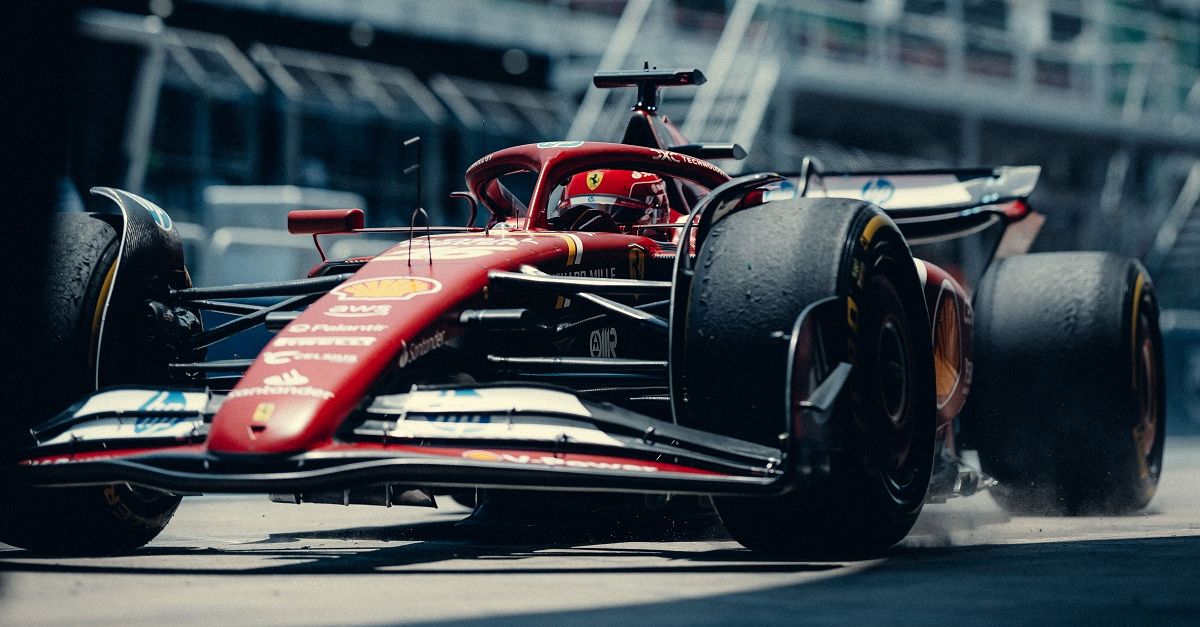[ad_1]
Amidst its general “coasting” from the bouncing problems caused by the new floor it presented in Barcelona in June, the Scuderia – according to its director, Fred Wasser – was late to adopt this year’s big advantage of the rubber front wings. The Frenchman explains how this happened.
Ferrari started the year very competitively, as the second force behind Red Bull, before losing that role in Miami to the McLaren MCL38’s major upgrade. This was followed by the Scuderia’s new floor at Imola, which helped the team to victory with Charles Leclerc in Monaco – but from the Spanish GP in June everything started to go downhill.
The new Barcelona floor, although it performed well in wind tunnel simulations and Maranello CFD, in practice caused very strong bounces in the SF-24, in straights and fast corners.
All summer the Scuderia had fallen well behind in the GP race as it tried to solve its floor problems with intermediate measures – before unveiling the new floor design at the end of August at Zandvoort. Read more about it here.

Carlos Sainz, Ferrari SF-24, Mexican GP 2024
SCUDERIA FERRARI PRESS OFFICE
In the midst of all this, however, the Scuderia missed out on a crucial parameter in the evolution of this year’s F1 cars: the rubber front wings. That is, the wings that bend at high speed under the weight of the aerodynamic load, thus reducing their air resistance and offering a higher top speed.
But beyond that, a highly elastic wing helps a car exhibit less oversteer in fast corners and less understeer in slower corners. These two tendencies are inherent defects of modern cars under ground effect, the technical regulation framework that started in 2022.
This parameter proved extremely effective in the McLaren MCL38 and Mercedes W15: the flexibility of the wings, at the absolute limit allowed by the regulations, was particularly effective for the cars of Woking and Brackley. And Red Bull quickly adopted it.
Ferrari finally got to race their own matching front wing in September at the Singapore GP, and reaped the benefits of the SF-24’s aerodynamic performance. From Monza to Mexico, the cavallino was the benchmark for F1 performance, even though he didn’t win every GP.

Scuderia Ferrari director Fred Wasser on the sidelines of the 2024 Dutch GP
ANTONIN VINCENT / DPPI / SCUDERIA FERRARI PRESS OFFICE
Team principal Fred Wasser has thus confirmed that the Maranello team lost valuable and crucial time in the development of the SF-24 over the summer by making the wrong choices in relation to the use of the rubber front wing.
The Italians wanted from early this year to develop a wing of the elasticity that McLaren and Mercedes had, first of all. However, they doubted that this wing would receive FIA approval.
“There was a relative irritation because at one point we were waiting for her decision FIA when they installed the cameras (monitoring the wings, from GP Belgium in July)” Wasser said. “We were convinced that they would not allow them. And finally they allowed them! So we probably lost one or two months”, added the Frenchman.
As he explained, the Scuderia did not want to take any chances with the development of the wing in question due to the constraints that the cost of such development places on the limits of the teams’ budgets: “It is difficult, because with the cost limit you have to make your choices.
This means that when you are convinced that something is not going to be allowed, and you have started to develop it, it will cost you time in the wind tunnel. But it was our decision”Wasser continued.
The FIA’s director of single-seaters, Nicolas Tombazis, explained his stance on the issue of front wing flex, saying: “Because the front wing loads (aerodynamically) in many different ways, we can’t easily predict it in the regulations.
Given that no two wings have the same loading pattern, it is very difficult to devise an accurate test. So, as these regulations have been in place since 2022, we felt it would be a bit rash of us to suddenly say we’re going to change it for 2025, or especially for 2024.
However, we are gathering this information to perhaps lead us to something more efficient for 2026.”concluded the Greek FIA technical director for Formula 1.
[ad_2]
